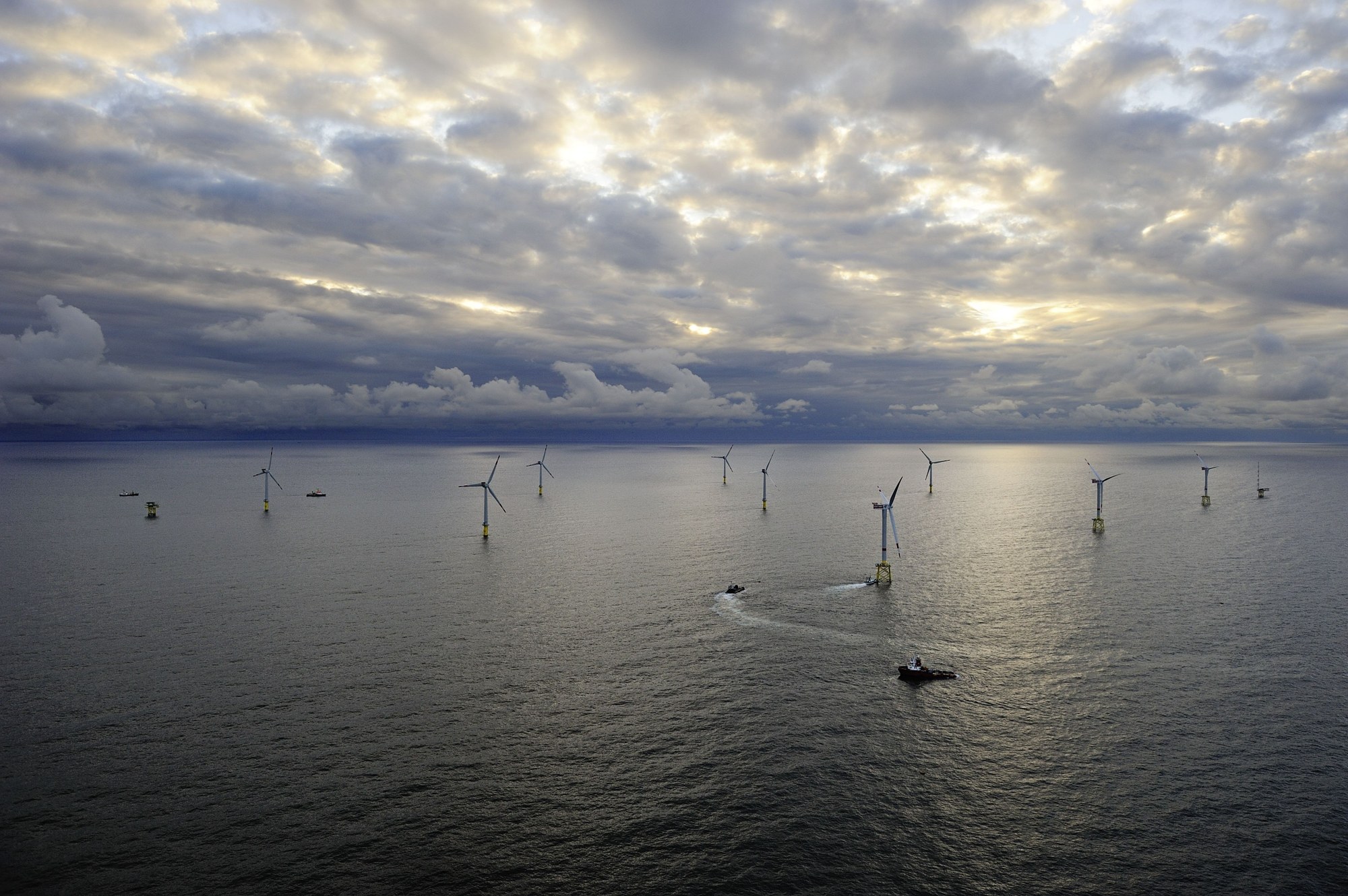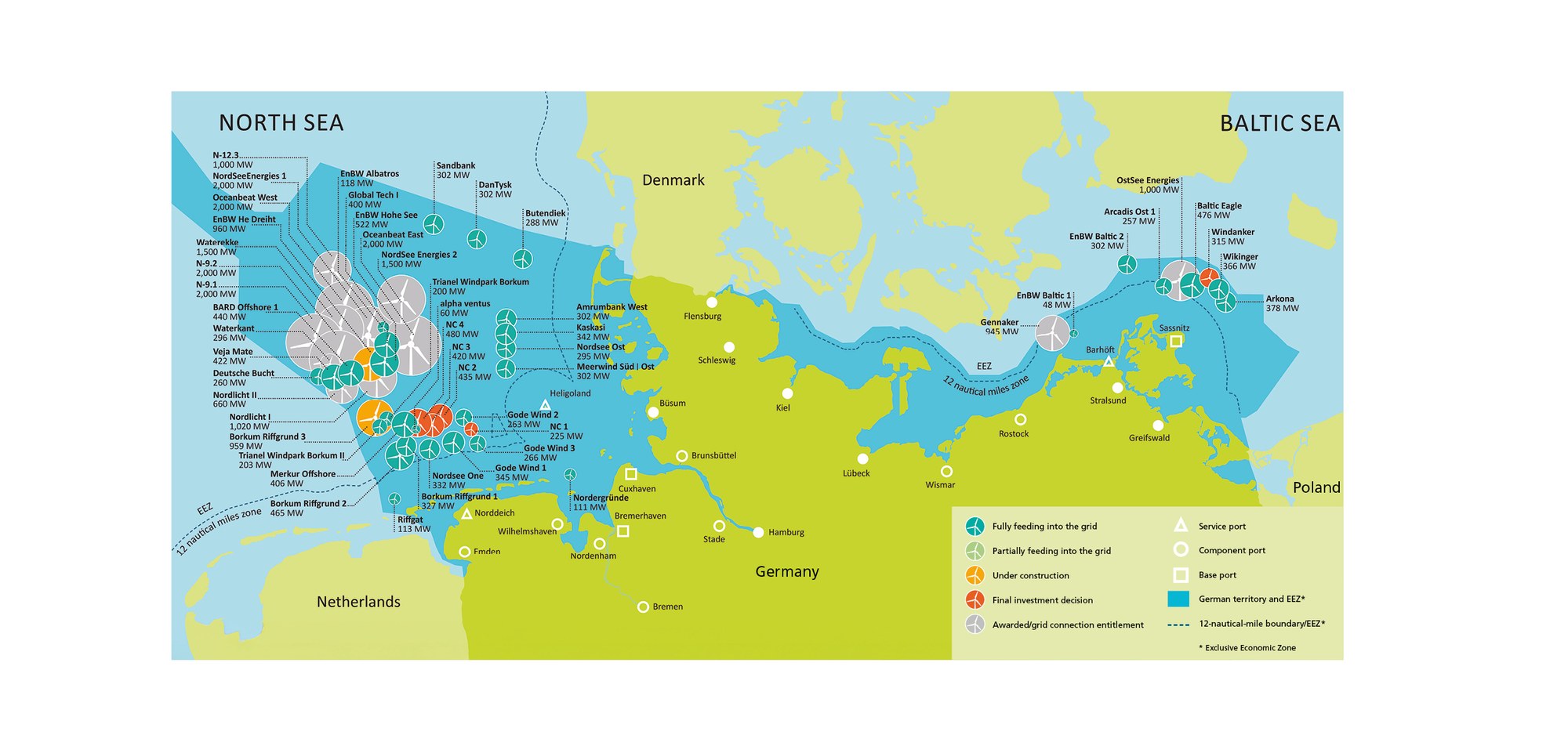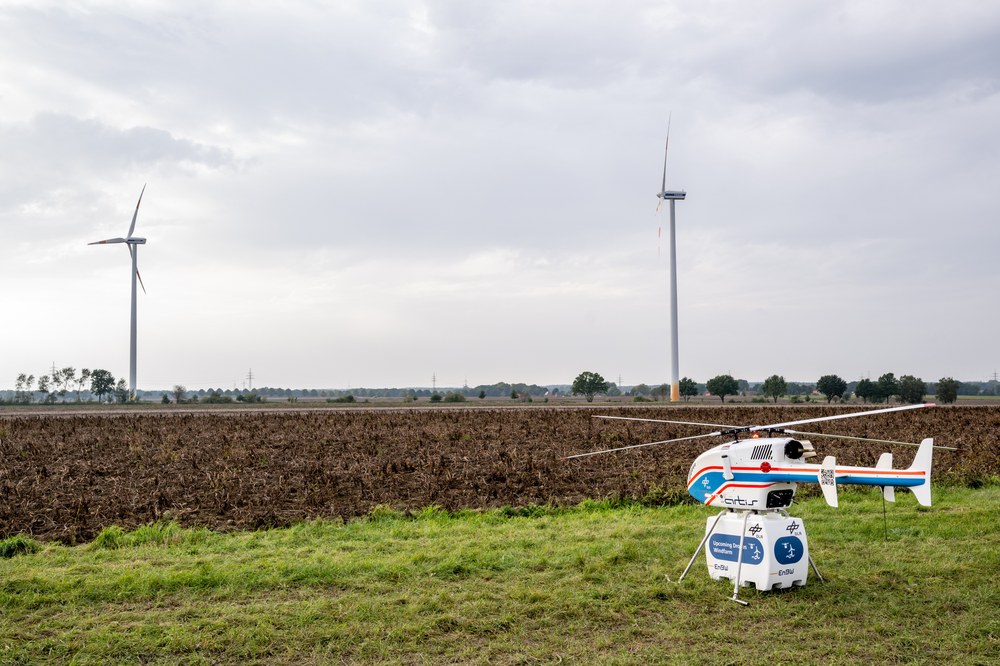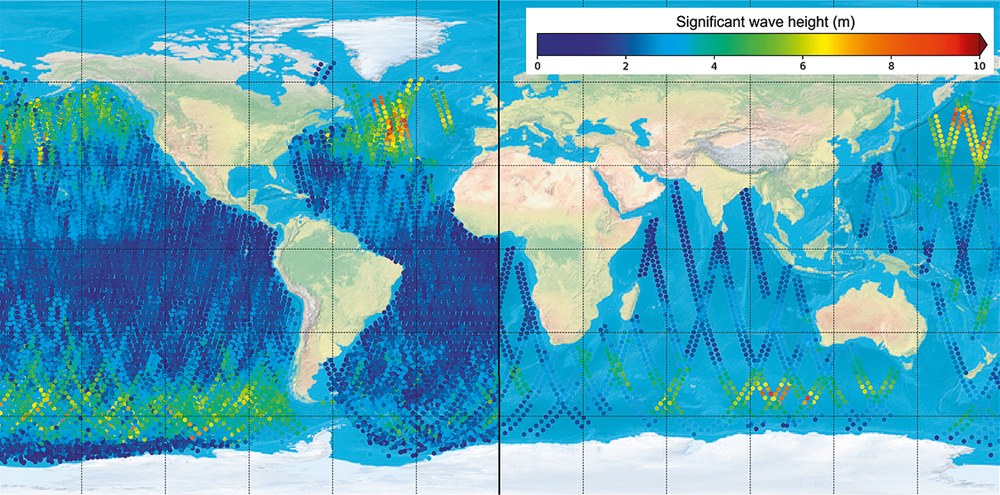Secure at sea

Doti/Matthias Ibeler
Alpha Ventus, Amrumbank West, Albatros and Wikinger – these intriguingly named offshore wind farms lie far from the nearest coast, reliably generating electricity in the fierce gales of the North and Baltic Seas. Their only visitors are the crews who come by ship or helicopter for servicing, maintenance and safety checks. A team from the DLR Institute for the Protection of Maritime Infrastructures is developing know-how and technologies to better protect these offshore wind farms against security threats, making them pioneers in a field that, due to recent events, is attracting increasing public attention.
Massive expansion planned
In the summer of 2024, Germany's approximately 30 wind farms had a capacity of almost nine gigawatts – equivalent to half a dozen medium-sized nuclear power plants and contributing between four and five percent of Germany’s total energy production. An ambitious expansion of offshore wind energy is planned for Germany and Europe due to growing electricity demands: for electromobility, the development of a hydrogen economy and the climate-compatible transformation of the industrial and heating sectors. As a renewable resource, wind offers a promising option for power generation and allows Germany to become less dependent on imports. Coupled with the fact that the North Sea is one of the windiest expanses of water in the world, it is perhaps no surprise that Germany's offshore wind power capacity is to be tripled by 2030 and increased sevenfold by 2045 – enough to cover more than 25 percent of Germany’s projected energy needs.
Critical infrastructure under threat
In addition to investment costs, which can run into many billions of euros, many offshore wind farms are also considered part of critical infrastructure – but to some extent, they are out of sight and out of mind. "Offshore wind farms are far away. You don't see them, so they're not really on our radar. Nevertheless, they already produce so much electricity that a major outage could impact our energy system," explains Frank Sill Torres, Acting Director of the DLR Institute for the Protection of Maritime Infrastructures in Bremerhaven. "We protect power plants and substations comprehensively on land with security concepts, fences, access restrictions, monitoring systems, and so on. Now we need to do more of this for our maritime infrastructure, including offshore wind farms. These facilities may be harder to reach, but they're not inaccessible."
Since 2022, the European Union has required operators of critical infrastructure to better protect their assets against security threats and boost their resilience. Such stewardship is intended to increase resistance to disruptive events, such as espionage, sabotage and terrorist attacks. In Germany, the KRITIS Umbrella Act is intended to ensure the implementation of this European regulation in the near future, requiring operators of offshore wind farms to address the security of their facilities, conduct risk analyses and take appropriate precautions. "So far, there haven't been any specific security standards or practices for this area," adds Sill Torres. "At the same time, the pressure to act has increased considerably due to events like the attack on the Nord Stream pipelines and the acts of sabotage against data cables in the Baltic Sea."

DLR – an international pioneer
With its Institute for the Protection of Maritime Infrastructures, DLR has been conducting research in this field since 2017. Policymakers, security authorities and companies turn to DLR for its expertise and to collaborate with the specialist institute. "Maritime infrastructures are complex systems," continues Sill Torres. "At DLR, we examine these system’s capabilities to prepare for, withstand and learn from critical events. To measure, evaluate and improve these capabilities, we develop computer-based methods and create comprehensive, generalised models of critical infrastructure. This allows us to simulate how dangerous situations arise and unfold, and then investigate their potential impacts. Based on our findings, we come up with recommendations on how best to act and respond most effectively."

Stiftung Offshore Windenergie
The team led by Frank Sill Torres is particularly interested in what happens during major events and outages of critical infrastructure. When it comes to offshore wind farms, this might involve the failure of a converter platform, which plays a central role by minimising losses and simplifying the transmission of electrical energy from the turbines to the mainland. "Our simulations and models allow us to determine the impact of a majorly damaging event on energy production and how long it would take to resolve a disruption. We can also calculate the probability of certain scenarios this way," Sill Torres explains. To investigate the effects of such events on the power grid, the team is collaborating with the Energy Systems Analysis department at the DLR Institute of Networked Energy Systems in Oldenburg.
Drones for transporting goods
Drones have proven to be important aids in inspecting onshore and offshore wind farms. In the future, they could also transport tools, materials and possibly even personnel – tasks that have so far only been performed by ships and crewed helicopters. This will require state-of-the-art technology, a high degree of automation and seamless operational integration. The Upcoming Drones Windfarm research project, run by the DLR Institute of Flight Systems and energy provider EnBW, is exploring solutions for drone-based transport. The goal is for drones to carry loads of up to 200 kilograms quickly and autonomously over distances of 100 kilometres to offshore wind farms. One highlight of the project was the Offshore Drone Challenge in June 2024. Held at the DLR National Experimental Test Center for Unmanned Aircraft Systems in Cochstedt, the event saw international drone manufacturers and operators demonstrate their technical solutions in a model mission. Drones were tested on flight manoeuvres, such as picking up and dropping off loads, as well as beyond-visual-line-of-sight (BVLOS) operations, in which drones must function entirely automatically. To support this, DLR experts set up a temporary geozone to expand drone operations – a previously unheard-of testing environment.
Offshore wind farms – a first practical example
For the still-young DLR institute in Bremerhaven, which has more than 60 employees, offshore wind turbine installations represent a first concrete application area for its research. Sea-borne wind farms share many characteristics with other maritime infrastructures, albeit not as large and complex as, for example, a seaport.

Three factors define the basic security situation for offshore wind farms. First, potential hazards can come from many directions – the sea surface, underwater, or from the air – but security measures such as fences or barriers are difficult to implement at sea. Second, the constant, comprehensive monitoring of wind farms is a challenge due to their location and weather conditions, compounded by the fact that it takes longer than on land for emergency responders or security forces to reach the scene – even by helicopter. Third, many stakeholders are involved in their construction, operation and maintenance, including the owners, manufacturers, and installation companies of turbines, converter platforms and cables, as well as providers of operations, control, maintenance and security services.
New algorithm records sea swell
The DLR Martime Safety and Security Lab in Bremen is developing algorithms based on satellite radar imagery that can measure the height of waves with a world-beating accuracy of approximately 25 centimetres, as well as their period. Up-to-date information and forecasts of sea swell are essential for coastal protection, shipping and the construction of offshore wind farms. As part of the ESA-funded CCI Sea State project, the entire archive of the Copernicus Sentinel-1 satellite was processed and compared with not only buoy and model data, but also algorithms from other leading global institutions. The findings are especially important for areas where on-site measurement data is unavailable.

Detecting risks early and creating room for action
Detecting and assessing potentially hazardous situations at an early stage is hugely important for the protection of maritime infrastructure. Frank Sill Torres' team can draw on a wealth of expertise to determine which approaches are best suited to the detection of anomalies and hazards, relying primarily on technologies and expertise from DLR' aeronautics and space research divisions.
Using highly specialised camera, radar or laser sensors, large areas can be monitored from the air with aircraft, drones or satellites. "Our expertise can be deployed very effectively to protect maritime infrastructure," says Sill Torres, referencing the wide-ranging synergies within DLR. "On top of that, we're well versed in merging the large volumes of data collected by these sensors and evaluating them using state-of-the-art IT and artificial intelligence methods." For maritime applications like offshore wind, sensor systems could be mounted directly onto platforms, or installed on board small, autonomous or remotely controlled submarines to monitor the area. DLR is discussing these ideas with sensor manufacturers, who may benefit from the fact that adapting their existing systems for maritime applications will open up an entirely new market.

BWE/Christian Hinsch
"Our overarching goal is to develop technologies that enable us to efficiently monitor and assess the situation at offshore wind farms, and use this information to support those responsible for making critical decisions," Sill Torres concludes. The findings from this research can also be used for developing security concepts and architectures, along with training security forces. "In this way, DLR is building up reliable, science-driven knowledge, and playing a decisive role in shaping the field of maritime infrastructure protection – which is of immense technological, political and economic importance."
An article by Denise Nüssle from the DLRmagazine 177
